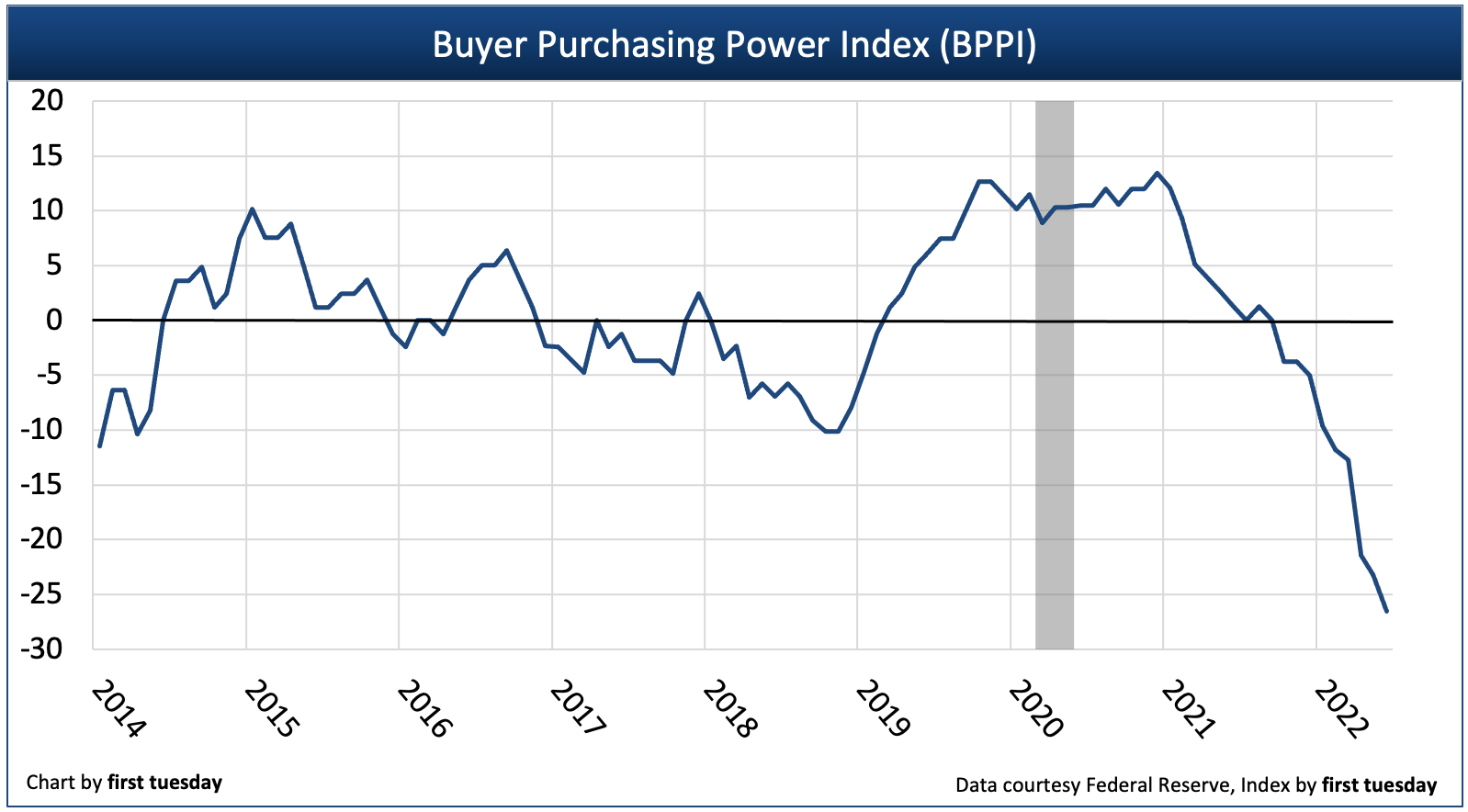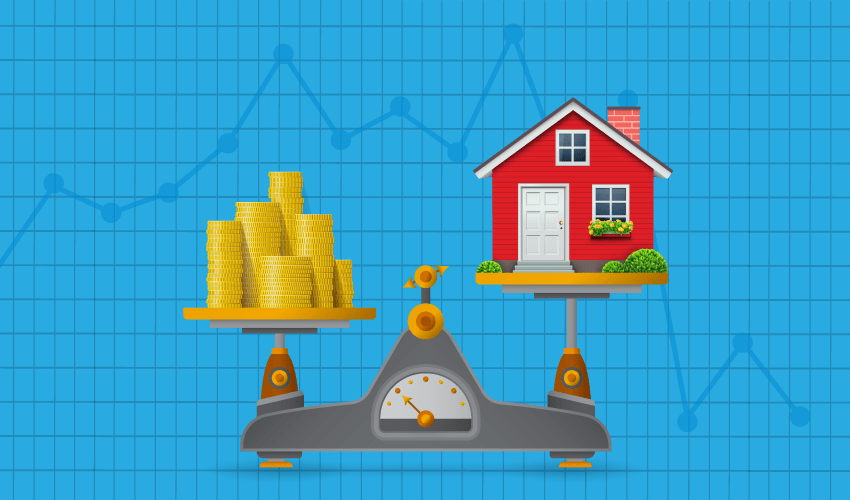The California Buyer Purchasing Power Index (BPPI) figure declined to -26.6 in June 2022. This figure tells us a homebuyer with the same income is able to borrow 26.6% less mortgage money than a year ago when mortgage interest rates were still near historic lows. Q2 2022’s significantly negative BPPI figure reflects a worsening situation for homebuyers reliant on mortgage financing, as the BPPI had previously been in the positive during 2019-2021 due to consistently lower mortgage interest rates.
In the coming years, the BPPI will remain negative as interest rates continue to rise, in what has been an historic turnaround for interest rates. The impact to homebuyer’s wallets has been devastating — and, like a shockwave, the impending blow to home prices is fast approaching.

Chart update 07/08/22
| Q2 2022 | Q1 2022 | Q2 2021 | |
| Buyer Purchasing Power Index (BPPI) | -26.6 | -12.7 | +1.2 |
As the BPPI declines, so goes support for home prices. In today’s rising mortgage interest rate environment, both the BPPI and homebuyer participation in the home sales market are adversely affected.
As of April 2022, average California home prices are 19%-to-28% higher than one year earlier. However, homebuyers qualify for a maximum mortgage amount based on their incomes and shifting interest rates. Thus, any rise in mortgage rates instantly cuts the amount they can borrow, and the price they pay for a home is reduced.
Without the support of falling interest rates, additional stimulus or income boosts, home prices are expected to fall back heading into 2023. Today’s rapid mortgage rate increases have already begun to interfere with home sales volume, as market momentum is swiftly cooling.
For some background, interest rates descended to historic lows in 2020 due to efforts to stimulate lending despite job losses and tightening access to credit. Beginning in Q1 2020, the Federal Reserve (the Fed) dropped their benchmark interest rate to zero and began purchasing mortgage-backed bonds (MBBs), fulfilling their role as lender of last resort to ensure mortgage originations continued.
In March 2022, the Fed finally bumped up its benchmark rate and announced the gradual sell-off of its MBB holdings.
Interest rates continue to rise in 2022-2023 as the Fed further increases its benchmark rate and gradually releases more MBBs into the market. In anticipation of the Fed’s bond taper, investor activity began to push rates slightly higher in Q3 and Q4 2021, with a rate surge arriving in Q1 2022.
firsttuesday expects mortgage interest rates to continue to increase in the months ahead, causing the BPPI figure to remain negative throughout 2022.
The long-term outlook for the BPPI is a decades’ long period of descent as mortgage rates continue to rise with the economic recovery, likely to gain strength around 2024. Thus, sellers can expect continued downward pressure on home prices.
As the Fed takes steps to cool inflation, steering the economy towards an economic downturn, expect the second act to the 2020 recession to arrive heading into 2023. The housing market will see declining sales volume in 2022-2024, with prices bottoming around 2025. Watch for a return of real estate speculators to provide a boost during the coming slump, with a sustainable recovery taking off with the return of end user homebuyers around 2026-2027.
About the BPPI
The Buyer Purchasing Power Index (BPPI) is calculated using the average 30-year fixed rate mortgage (FRM) rate from Freddie Mac (Western region) and the median income in California.
A positive index number means buyers can borrow more money this year than one year earlier.
A negative index figure translates to a reduced amount of mortgage funds available.
An index of zero means there was no year-over-year change in the amount a buyer can borrow with the same income. At a BPPI of zero, homebuyers cannot purchase at higher prices than one year before unless they resort to adjustable rate mortgages (ARMs) to extend their borrowing reach or greater down payment amounts.
As long-term BPPI trend declines, the capacity of buyers to borrow purchase-assist funds is reduced. In turn, buyers needing purchase-assist financing on average can only pay a lesser price for a home. To keep the inventory of homes for sale moving at the same pace, sellers will need to lower prices to accommodate buyer purchasing power or pull their properties off the market.
—
first tuesday journal online is a real estate news source. It provides analyses and forecasts for the California real estate market, and has done so since 1978.














